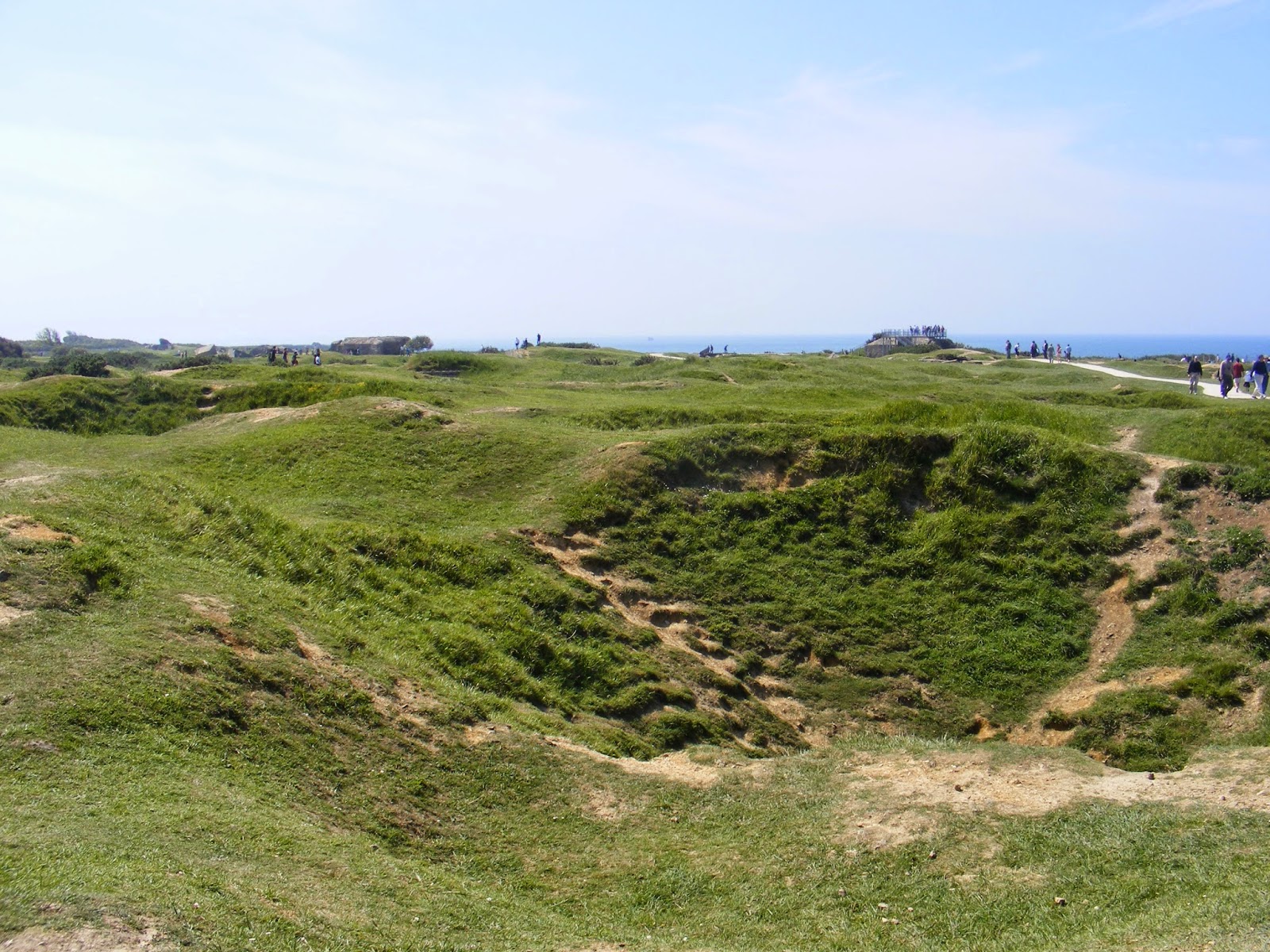 |
| Mulberry harbor remnants, Arromanches |
 |
| Omaha Beach, June 2009 |
I went over to him.
“Mark, are you all right?” I asked, struck by his uncharacteristic silence.
Without turning, he murmured, “I never thought it could be like this again.”
After lunch, some of my flock wanted a coffee. I drove them breezily along the crest of the bluff that so many soldiers died trying to reach. We found a bar/café at a crossroads out in the middle of nowhere, among the fields.
 |
| Utah Beach |
After a while, we were ready to get on with the day’s tour. We stopped at the bar to pay our bill. “Combien on vous doit?” I asked the gentleman. How much do we owe you? I speak without an accent, I’m told, but my wards had been merrily chatting away in English.
“Américains?” he asked, looking them over in turn. “Yes,” I answered, not knowing where this was going. “C’est déjà payé.” he replied. It’s already paid for.
I looked around at the men standing at the bar, wondering why one of them had paid for us.
“I was eight years old on D-Day,” he went on. “It’s already been paid for.”
 |
| Pointe du Hoc |
Between those two “American” beaches is a headland: the Pointe du Hoc. With its view of the coast both east and west, it’s a place that puts things into perspective. Quickly. There are some platforms overlooking the English Channel on one side and the remaining Nazi blockhouses on the other. The plateau stretching all around is still pockmarked with deep craters, now green with wild grass, craters made all those decades ago by incoming bombs.
 |
| Bomb craters |
When the guide was through and most of the tourists were heading off to the bus and their next stop, those old men hung back. I went over to one of them, the one closest to me.
“Were you here on that day?” I asked.
“Yes,” he said, simply.
I held out my hand. “Thank you.”
He seemed perplexed and looked briefly at his friends, all other veterans. Then he took my hand, shook it, looked down at his shoes and moved off.
 |
| American Cemetery, Coleville-sur-Mer |
Overlooking Omaha Beach, at the top of the vertical bluff, is the American Cemetery, on land which has been donated to the United States in perpetuity. In it are buried 9,387 Americans who gave their lives to free Europe and the world of Nazi totalitarianism. My tourists always want to go there. I take them near closing time, when it’s more calm and most of the tourists have left. It’s most beautiful at that time, and you can hear your thoughts better. Your thoughts, and the memories.
 |
| German girl discovering a blockhaus at Pointe du Hoc |
Now he's back for the 70th anniversary. Even fewer veterans will be present. The ones who haven’t died are probably too old for such a long trip.
And yet it’s a long trip that is still easier than the one they made on June 6th seventy years ago.
 |
| Not all D-Day victims came from far away. Some were locals. Churchyard near Sainte-Mère-l'Eglise |
If you’re a history buff, you might like to listen to that 65th anniversary ceremony, which includes President Obama’s 2009 speech (starts at the 38 min. mark). It also has wonderful video coverage of the site itself. Here it is from c-span: http://www.c-span.org/video/?286879-2/65th-anniversary-dday-ceremony
Thank you for this, Sandy. My father in law, Robert Elliott, was an engineer in WWII. He built the pontoon bridges that eventually went across the Rhine. That company was always in front of the front lines; he lost many companions. He was at the liberation of one of the concentration camps. He had some serious ptsd, which made parenting my husband difficult; he was an older than average father, as you might have guessed. About 20 years ago, he and my mother in law drove across Europe, revisiting many of the places he'd been during the war. He was finally able to talk about some of his experiences. My parents are going to Normandy this summer.
ReplyDeleteThank you, Sandy. I haven't been to Normandy with you, but I've been with you at some famous Resistance sites in southern France. You have a great way of evoking history.
ReplyDelete